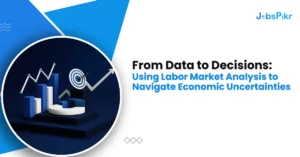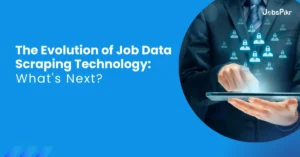When it comes to data empowering individuals, you need to look at both sides of the table. Labor market data analysis can empower the hiring manager or the recruiter as well as the job applicant, though the process and data source may differ. Today we will be looking at how data can enable both the recruiter and the applicant to make better decisions and make the process more seamless.
Labor Market Data Analysis: The Applicant
Let’s look at the applicant first. I think all of us have been a job applicant at some point of time or other. And we have received interview calls. And have done background research before joining a startup. We have gone through Glassdoor to read reviews, to know about the work culture, and to get an idea of what salary we should be negotiating. But what if I told you that there an automated way to go about doing this? And there is more that you can do to prepare yourself before going for that dream interview, all using the data in hand!
If you are a job applicant and you are doing background research on a company, you need to dig up quite a bit to get a bigger picture. If it is a larger, well-known company like Facebook or Google, then this might not prove to be a hassle. But if you are joining a startup. With 10 people, you need to be sure of the founders, the people working there, their credibility, and their goal. Web scraping can help you with this. You need to search for all occurrences of the name of your company in Google search as well as Google news search. Labor market data analysis can aid in keeping pace with the market trends.
In case your company is a very small one. I would recommend you do the same with the name of your founders just to be sure. This will lead you to articles both positive and negative. As well as customer reviews, news-pages, special mentions, testimonials of older employees, and more! This can prove to be a treasure trove of data, that you can get easily and would give you a much bigger picture of the company that you want to join. You should also be getting some information on the company’s details on government websites since almost all countries require some amount of company information to be publicly available.
You can view the paid-up capital, the type of license that the company owns (which would explain the sector of business that it is targeting), who all are the directors of the company, and sometimes even the name of the parent company if one exists.
But that is all about the company itself, what about how much it pays? Interview Questions, reviews, and how it treats employees? For this, I would recommend you scrape data from multiple places. Getting data on employees of the company from Linkedin. It would give you a fair idea of what type of people with what sort of credentials are currently working at the company. Labor market data analysis can aid in keeping pace with the market trends.
Their years of work experience. The tech-stacks that they are experts at, and the previous companies that they worked at. Can give you a fair idea of what kind of background you would require to apply to specific roles in the company. On the other hand. GlassDoor data can help you understand the salary that you can ask for. The types of benefits that you can expect as well as a general overview of how good or bad the management of the company is. Another website not traditionally scraped in such a situation, but can end up being a boon is Quora.
Scraping Quora for all questions and answers. The name of the company can unearth information that you may have had no idea about. I used data from Quora to choose which company to join. When I had two offer letters. But then at that time, it was all manual and it took me hours to do such tasks.
Labor Market Data Analysis: The Recruiter
The recruiter, on the other side of the table, can use data just as efficiently as the applicant. Among the tasks that a recruiter has to handle. Shortlisting candidates is one of the toughest and takes a lot of time. A basic filter created by the hiring manager to separate ones that don’t fit the bill. Some manual work will still needed to scrape out the best profiles. But the job reduced manifold, and this way you would not be shortlisting someone who might have applied randomly. Labor market data analysis can aid in keeping pace with the market trends.
If you are a recruiter who needs to hire for multiple job profiles. You can even use algorithms that will help you match the best fits for each profile from a pool of candidates.
In case you just have a job post and are not sure about the requirements that applied- if it is a generic role. To say a software engineer you can use web scraping to find the most commonly mentioned requirements. And good to have for that profile and use it to create your job post.
Be it making sure that the recruiting budget handled or the right candidate’s profiles handed on to the person concerned. Data and analytics can streamline an HR personnel’s job to a great extent. Today some tools can go through video recordings of interviews and highlight the ones that it finds best based on multiple data points. But a human touch required in the recruiting process until AI learns how to feel empathy.

Conclusion
Whether you are a recruiter or a job applicant, you are highly dependent on job data and job posts. Want to get the job data-feed that you can plug into your system and run algorithms on? That’s why we have our automated job scraping tool- JobsPikr. Which can provide you with a fully automated data feed without the hassle of maintenance and infrastructure? You can build services on top of the data easily. You can use custom filters to decide what sector you want your job feed from. Which location you want to target, and more.




